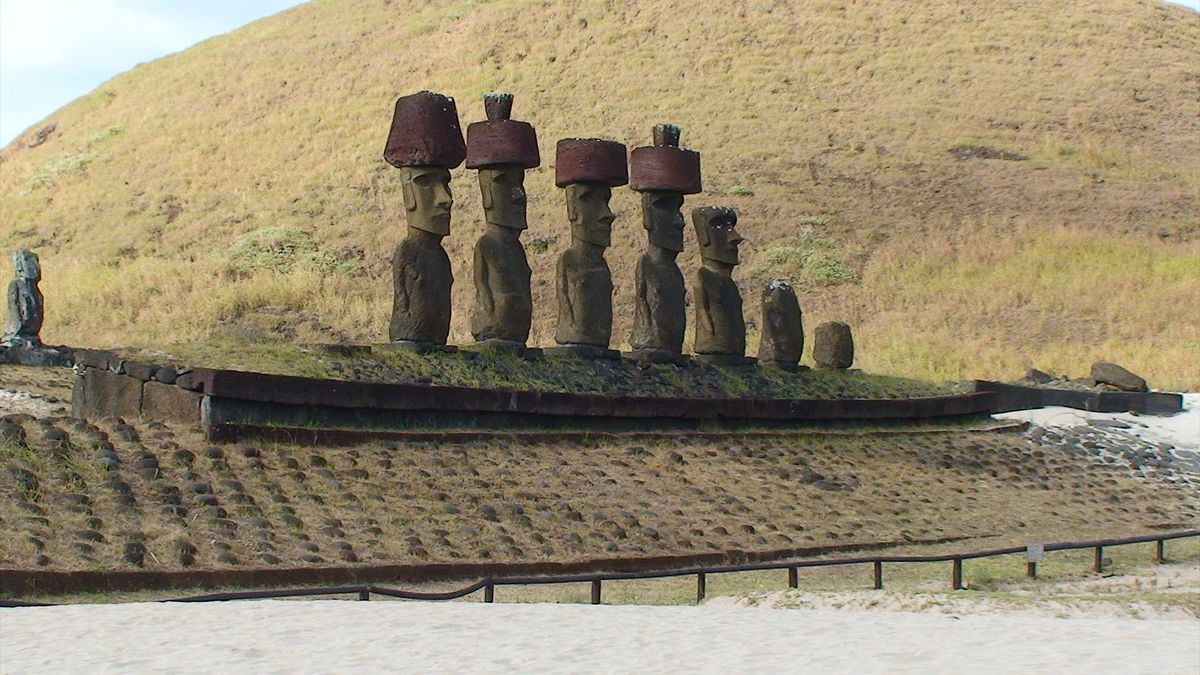Welcome to DU!
The truly grassroots left-of-center political community where regular people, not algorithms, drive the discussions and set the standards.
Join the community:
Create a free account
Support DU (and get rid of ads!):
Become a Star Member
Latest Breaking News
Editorials & Other Articles
General Discussion
The DU Lounge
All Forums
Issue Forums
Culture Forums
Alliance Forums
Region Forums
Support Forums
Help & Search
Anthropology
Related: About this forumObsidian blades with food traces reveal 1st settlers of Rapa Nui had regular contact with South Americans 1,000 years ag
Obsidian blades with food traces reveal 1st settlers of Rapa Nui had regular contact with South Americans 1,000 years agoBy Kristina Killgrove
published yesterday
The earliest settlers of Rapa Nui, also known as Easter Island, appear to have had some sort of contact with people from South America as early as 1,000 years ago, a new plant study finds

Statues at the base of a hillside on Easter Island.
Anakena is the earliest known settlement on Rapa Nui, also known as Easter Island. (Image credit: Andrea Seelenfreund, CC-BY 4.0)
One thousand years ago, the first settlers of Rapa Nui — also known as Easter Island — feasted on a fusion cuisine of plants native to Polynesia but also ones indigenous to South America, around 2,300 miles (3,700 kilometers) away, a new study finds.
Researchers discovered the food remnants by identifying starch grains clinging to obsidian blades at the archaeological site of Anakena, the earliest known settlement on Rapa Nui, which was occupied from about A.D. 1000 to 1300, according to the study, published Wednesday (March 20) in the journal PLOS One. The finding suggests that the early Polynesians had regular contact with the people of South America as far back as a millennium ago.
The southeastern Pacific island Rapa Nui is known primarily for the hundreds of monolithic human statues called moai that were erected on stone ceremonial platforms called ahus. The island was formed from three volcanoes, two of which are now extinct, and early settlers carved the moai from the consolidated volcanic ash.
Although Rapa Nui was not known to the wider world until Dutch explorers landed there on Easter Sunday in 1722, the native people had already lived on the island for hundreds of years. But the specific timing of their settlement and their geographic origins remain somewhat mysterious, and experts disagree about whether the earliest settlers came from Polynesia, South America or both. The oral history of the Rapa Nui people suggests that at least one round-trip voyage to South America was made from the island during the early years of its settlement.
More:
https://www.livescience.com/archaeology/obsidian-blades-with-food-traces-reveal-1st-settlers-of-rapa-nui-had-regular-contact-with-south-americans-1000-years-ago
2 replies
 = new reply since forum marked as read
Highlight:
NoneDon't highlight anything
5 newestHighlight 5 most recent replies
= new reply since forum marked as read
Highlight:
NoneDon't highlight anything
5 newestHighlight 5 most recent replies
Obsidian blades with food traces reveal 1st settlers of Rapa Nui had regular contact with South Americans 1,000 years ag (Original Post)
Judi Lynn
Mar 2024
OP
WestMichRad
(2,708 posts)1. That provides pretty convincing evidence
… that they had at least a little contact with (a) South American tribe(s). Very cool!
My brother was an anthropologist and was fascinated by the Easter Island research.
sinkingfeeling
(56,562 posts)2. Proving some were brilliant sailors. Rapa Nui is over
2300 miles from Chile. And if it were a round trip, they had to be right on to find the tiny island again.